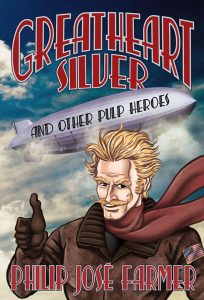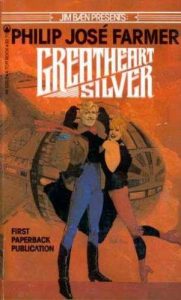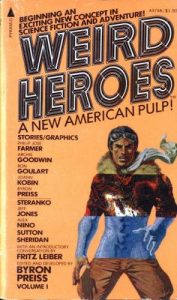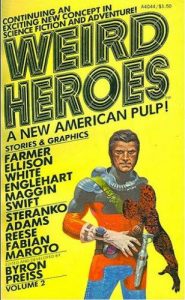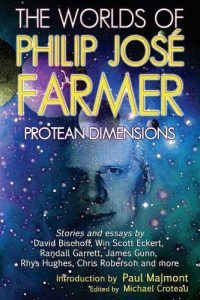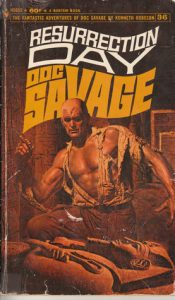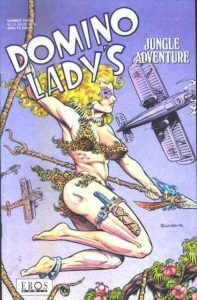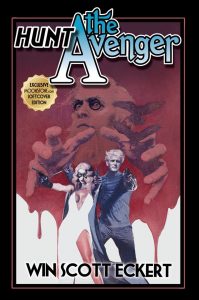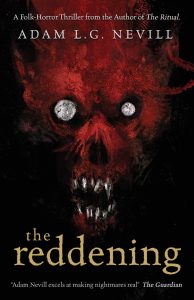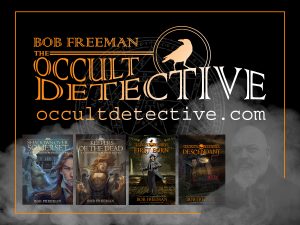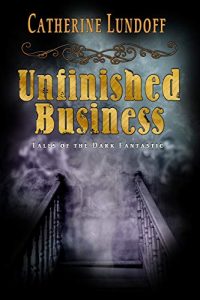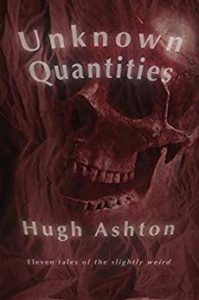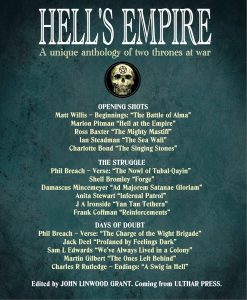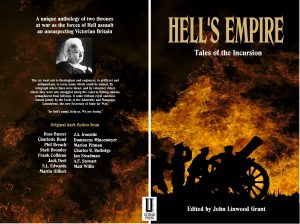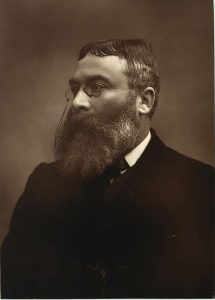An action-adventure day, dear listener, in which we introduce you to the only survivor of an attack on Acme Zeppelin Eight, a man who is gifted with a plastic prosthetic leg, two ravens, and a thirst for action… Greatheart Silver, from Philip José Farmer. Dave Brzeski reviews Greatheart Silver and Other Pulp Heroes, and then another chunk of pulpy goodness, Hunt the Avenger by Win Scott Eckert.
Greatheart Silver and Other Pulp Heroes by Philip José Farmer
Published by Meteor House
Reviewed by Dave Brzeski
This book opens with an excellent and very informative introduction by Garyn G. Roberts Ph.D., in which he gives a very detailed background of Farmer’s love for and relationship with Pulp fiction. Without wanting to repeat too much of the information in that introduction, it’s worth mentioning here that Greatheart Silver was Farmer’s homage to the great pulp heroes of the 1930s.
The three original novellas originally appeared in numbers 1, 2 and 6 of Byron Preiss’s short-lived series of pulp tribute anthologies, Weird Heroes: A New American Pulp!, published by Jove Books in 1975-1977. They were later collected by Baen Books in 1982 as Greatheart Silver.
This current volume collects all of those stories, plus additional Farmer pulp-related material. The Baen paperback collection of the Greatheart Silver stories was presented as a fix-up novel and this is maintained here, with the chapter numbers continuing through all three, so the second story starts at chapter nine.
‘Greatheart Silver in Showdown at Shootout’ is not so much a pulp hero pastiche as it is pure parody. The first line—“The Mad Fokker struck again”— made me laugh out loud when I first read it in 1975 and it still makes me grin now. The Mad Fokker owes as much to Dick Dastardly as he does to his pulp origins. Greatheart Silver, having lost his airship, job and fiancée, finds himself teamed up with a thinly disguised octogenarian Shadow in an effort to bring the architects of his misfortune to justice.
Farmer’s original foreword is mainly an apology to the almost forty pulp heroes and villains who are mercilessly lampooned in this story, as only someone who truly loved reading their original exploits could. In fact, the bulk of the story is devoted to a mass battle scene that comes over like a version of Avengers: Endgame, if it were a co-production of a 1950s Mad comic and a Hanna Barbera cartoon.
I happened to check my copy of Weird Heroes to establish whether, or not that foreword was included in the original publication of the story, or was added in the Baen Books collected edition. It was in the Weird Heroes printing. Not only that, I discovered Farmer had also written an afterword, which revealed a little more information on his thoughts regarding that first story:
[Byron Preiss] asked me to to write a story for Weird Heroes, I suppose because I’ve written much about the pulp heroes of the thirties and fourties. And so there went a character (me) in search of a hero. The hero (read: He or she or it) must derive from the old pulp protagonist but be a product of modern times. So, a final confrontation between the great pulp-villains and the pulp-heroes, most of whom would be in their eighties and nineties. Kill them off in a grand finale with tears and laughter.
This is why Silver is, in this initial tale, not as rounded or as much an active participant as he should be. I have to usher the old ones into the terminal wings before I can really bring my hero onto the uncluttered stage.
Referring to that original Weird Heroes appearance did bring one regret to light – the fact that the potential cost prevented Meteor House from reprinting the original Tom Sutton illustrations, as they were excellent. The Baen books edition didn’t have them either, as far as I’m aware.
‘The Return of Greatheart Silver, or The Secret Life of Rebecca of Sunnybrook Farm’ is indeed a rather more substantial story than the first. Greatheart Silver takes a far more active role here , but the humour is definitely still very much in evidence. Silver is out of work and blackballed by his ex-boss, Bendt Micawber (a black sheep relative of the famous Dickens character), so he can no longer get a job in the Airship industry.
In an effort to recover a valuable painting his ex-wife stole from him, he cons his way on to an Acme W-W Cleaners crew, who have a job on in her apartment block. Unfortunately, the rest of the crew are even more fake than he is, and he witnesses a kidnapping… and he knows the victim. Hired by the father of the victim, who happens to be Bendt Micawber, Silver has to rescue his old flame.
That second tale is many times better than the first, but the improvement continues. ‘Greatheart Silver in the First Command, Or Inglories Galore’ is worth the price of the book on it’s own. Once again the humour, while still present, is secondary to the story. It starts out as a broad farce, but soon shifts into something more reminiscent of a seventies disaster movie. It’s a page-turner of a pulp adventure that leaves the reader wanting more. Sadly, this was the final Greatheart Silver story – at least it was, until ‘The Final Flight of Greatheart Silver’ by Chris Roberson appeared in Worlds of Philip José Farmer Vol. 1: Protean Dimensions, also published by Meteor House back in 2010. Copies are still available from the publisher. I actually reviewed that particular volume here *.
There being no more Greatheart Silver stories to collect, the rest of this book is devoted to The Grant-Robeson Papers. This was to be a series of stories, written as by the authors of The Shadow (Maxwell Grant) and the Doc Savage (Kenneth Robeson) pulp adventures. Most people believe those names were pseudonyms for Walter Gibson and Lester Dent respectively (albeit other writers occasionally penned stories under those names.) Philip José Farmer would like to correct this erroneous notion. They were not only real people – as real as Kilgore Trout no less, but they wrote long lost stories, featuring each other as protagonists. Just one of these stories were finally brought to light in the late 1970s.
From Maxwell Grant, we have ‘Savage Shadow’, in which struggling pulp author, Kenneth Robeson witnesses a kidnapping and finds himself embroiled in a real pulp adventure, when he decides, perhaps foolishly, to help a beautiful woman rescue her father. Along the way, they secure the assistance of a motley (if rather familiar) collection of drunken first world war veterans. Once the adventure gets going, it very soon enters the realm of farce once again, as things get more and more out of control. It doesn’t help that yet another character familiar to Robeson’s fans turns up to complicate matters further. It’s not really a spoiler to reveal that all ends well and leaves Kenneth Robeson with a really good idea for a pulp hero series.
Sadly, no story by Kenneth Robeson, featuring Maxwell Grant as the protagonist has come to light. It’s not really within the purview of a reviewer of books to speculate on such things, but I can’t help but wonder, in the light of certain facts…
… In the 1970s, the World finally learned in the pages of Philip José Farmer’s Tarzan Alive and Doc Savage: His Apocalyptic Life that those and many other well-known characters who were thought to be fictional really existed. Since we now know that Doc Savage and his aides were most certainly not ineffectual drunkards, one can’t help but wonder if Maxwell Grant didn’t come under some sort of pressure to change the facts of his story – and just maybe Kenneth Robeson may have been requested to destroy all copies of a tale that revealed rather too much about the life of Kent Allard. We are told in the author’s introduction to ‘Savage Shadow’ that there was a plan to transplant their adventures into the 1970s, but this also never happened. In light of all this confusion, it’s not at all surprising that so many readers still desperately hold on to the theory that the likes of Doc Savage, The Shadow, Tarzan, Sherlock Holmes et al are all fictional characters, with no basis in real life.
Despite the non-appearance of those other tales, this collection does offer us one more story, credited to Maxwell Grant. ‘Skinburn’ involves the son of Grant’s best known protagonist in a very strange adventure involving mysterious deaths that seem to befall anyone who gets too close to him. Like the others, there’s an element of tongue-in-cheek humour to balance a pulp adventure story, albeit a slightly more risqué one. Whether, or not one chooses to believe the entire book is the product of Philip José Farmer’s imagination makes little real difference to the quality of the work we are here presented with. Even though the Greatheart Silver stories do improve as they progress, they are never less than enjoyable as the writing is consistently excellent. Recommended.
Hardcover only at present. Order it here http://meteorhousepress.com/greatheart/ . It’s also available on Amazon.
* NB: There’s a minor issue which causes certain special characters to be displayed oddly on this review, which was caused by the British Fantasy Society moving their website to a different server. Sadly, no one seems to have considered it worth fixing.
UNCRUCIAL TRIVIA: Being comics fans at greydogtales, we can confess that we first encountered Domino Lady, mentioned below, many many years ago in the possibly questionable range of Eros Comics featuring her. From the cover, it may be fortunate that we can’t remember the content inside.
The Lady gets her name from the domino mask she wears (which seems to be quite a large part of her entire outfit in the Eros version), and not because of her prowess at the game of dominoes. In case you were looking forward to a pint and a game of ‘fives and threes’ with her.
On the other hand, Greatheart Silver is said to get his first name from the character Greatheart in John Bunyan’s Pilgrim’s Progress, which we sincerely hope was never adapted by Eros.
Now for our other review…
Hunt the Avenger by Win Scott Eckert
Published by Moonstone Books
Reviewed by Dave Brzeski
This is another fix up style novel, this time consisting of five Avenger stories, three of which previously saw publication in anthologies dedicated to that classic pulp character. In addition to these, we get two new ones of equal length. Alongside Richard Benson: The Avenger and his team – Justice Inc., all bar one of them also feature another classic pulp hero, The Domino Lady.
The original pulps of the thirties and forties have a reputation amongst many critics of being badly-written trash. There is some truth to that, as the authors had to work fast for very little money to put food on their tables and a roof over their heads. The better amongst them, however, made up for any such failings in the way they delivered a fast-paced, action-packed tale which carried the reader along on a truly absorbing adventure.
Pulp adventure seems to be back – if it ever really went away – in a big way in recent years, what with several independent publishers now specialising in the field. It can’t be denied that this has again led to quite a few pretty bad books, but the best of these ‘new pulp’ authors combine the elements of the best classic pulp fiction that made its authors so successful with somewhat more technical writing skill – if only because they have rather more time to devote to it. Win Scott Eckert absolutely nails this combination. Eckert is an absolute master of capturing the style of the pulps and the historical details and language of the era, while being an exceptionally good modern writer.
I have actually read far more Domino Lady stories than I have of The Avenger, something I really need to rectify, considering there’s rather more Justice Inc. material out there. I’ve read the original handful of Domino Lady pulp adventures, some very good revivals of the character and one spectacularly awful one. I won’t name names, but when a character in a story set during World War Two refers to another character as a MILF, you know it’s not going to be good.
The opening tale is one of the new ones, written specifically for this collection. ‘Part I: The Glass Lady’, had me hooked immediately. Eckert nails the period feel so well that I swear I could almost see the action unfold in my head in black and white! The Domino Lady, in her true identity of Ellen Patrick, is present at an important social gathering, when an unseen assailant helps himself to the attendees’ valuables. Realising she’ll need help to bring in this invisible thief she does something almost unprecedented in first time hero team-ups. She contacts Richard Benson and works with him from the get-go. No refusing to share information (OK, but the police don’t count!), no hero on hero fight, no competition to see who can solve the case first. She even reveals her secret identity to The Avenger and his team immediately. It makes such a nice change. As well as the aforementioned invisible thief, Justice Inc. and their new ally go up against an old enemy and face a Nazi plot.
‘Part II: Death and the Countess’ is the first of the three previously published tales. It pits Justice Inc. (without Domino Lady this time) against a Russian Countess, who plans on selling a deadly new super-weapon, which could change the tide of the war, to the highest bidder. Richard Benson is of the opinion that it would be far better to destroy this vile invention altogether.
‘Part III: Happy Death Men’ teams Justice Inc. up with Domino Lady once again. Interestingly, Richard Benson is much less enamoured of Ellen Patrick by this point, disapproving of her methods of getting close to her targets and her often permanent ways of dealing with them. He evidently formed this opinion between the events of the first story (which was actually written later) and this one. They encounter the latest plot of an old enemy and meet the man behind the scenes. Win Scott Eckert proves himself the absolute master of the subtle crossover reference once again in a story that contains several sly references to other classic pulp (and comic book) adventures. He even manages to include a relatively obscure Arthur Conan Doyle short story! Eckert’s true skill is in the way he does this so seamlessly that those who don’t get the references will not even be aware of having missed anything at all.
In ‘Part IV: According to Plan of a One-Eyed Trickster’ Eckert’s penchant for crossovers is given free reign. An old FBI colleague visits Benson in the company of ‘Jim’, no last name given – a young British government agent, with a slight Scottish accent. They bring news of the villains’ demand that Richard Benson and the Domino Lady surrender themselves to avoid what can only be termed terrorist attacks on UK and US soil.
The fifth and final story/chapter – ‘Part V: Toil and Trouble’ is the second to be written especially for this collection. It opens with Justice Inc.’s discovery of an imposter in their midst. It made me wonder if I might not be reading about a scientific breakthrough that may have eventually played a part in the Terminator franchise.
The fix-up format, of ostensibly separate, but connected stories combining to form a larger, novel length adventure works exceptionally well here. As these stories progress, we learn more and more about the main villains, with copious hints about their involvement in other adventures. I must stress again that new readers will absolutely be able to enjoy this book without ever having read a word about Richard Benson: The Avenger and Justice Inc., The Domino Lady or any of the other stories/characters hinted at in the text. However, those who are already familiar with the work of Win Scott Eckert, Philip José Farmer and the original authors/creators of the characters herein, or who are inspired to seek it out, will find themselves engrossed in a larger story that becomes clearer and clearer as they read more. To this effect, Eckert has a very useful page on his blog here…
http://www.winscotteckert.com/2018/10/everything-is-connected-wold-newton.html
If I have one complaint, it’s the matter of the availability of this book. It is currently only available by ordering online directly from the Moonstone Books website. The cost for someone in the UK would be $24.00 for the hardcover, or $9.99 for the paperback plus $49.00 shipping!
Signed hardcover: http://moonstonebooks.com/shop/item.aspx?itemid=1226
Paperback: http://moonstonebooks.com/shop/item.aspx?itemid=1225
The fact that a copy came into my hands at all is entirely due to the luck of my having a UK based friend who was attending the convention in the USA, where the book was launched, who was kind enough to bring a copy back for me. I sincerely hope that eventually an ebook edition (if nothing else) will be made available in the UK.
IN OTHER NEWS…
For those with an interest in murder and mystery at the turn of the Victorian century, come meet Great-Aunt Agatha, the consummate assassin Mr Edwin Dry from ‘13 Miller’s Court’, the alienist Dr Alice Urquhart, a canonical Sherlock Holmes, and more…
Finally, the first ever Kindle version of the full collection by John Linwood Grant, A Persistence of Geraniums & Other Worrying Tales is available! Short stories and novelettes of murder, madness and the supernatural, in the world of the Last Edwardian. With a cover by Alan M Clark, all the original interiors by Mutartis Boswell, and the bonus plate of Mamma Lucy by Yves Tourigny. A moment of genuine pleasure – and relief – for me. It had great reviews in PB, and one of the “Jamesian” stories (set on Suffolk’s shores) was picked for Stephen Jones’ Best New Horror 29.
